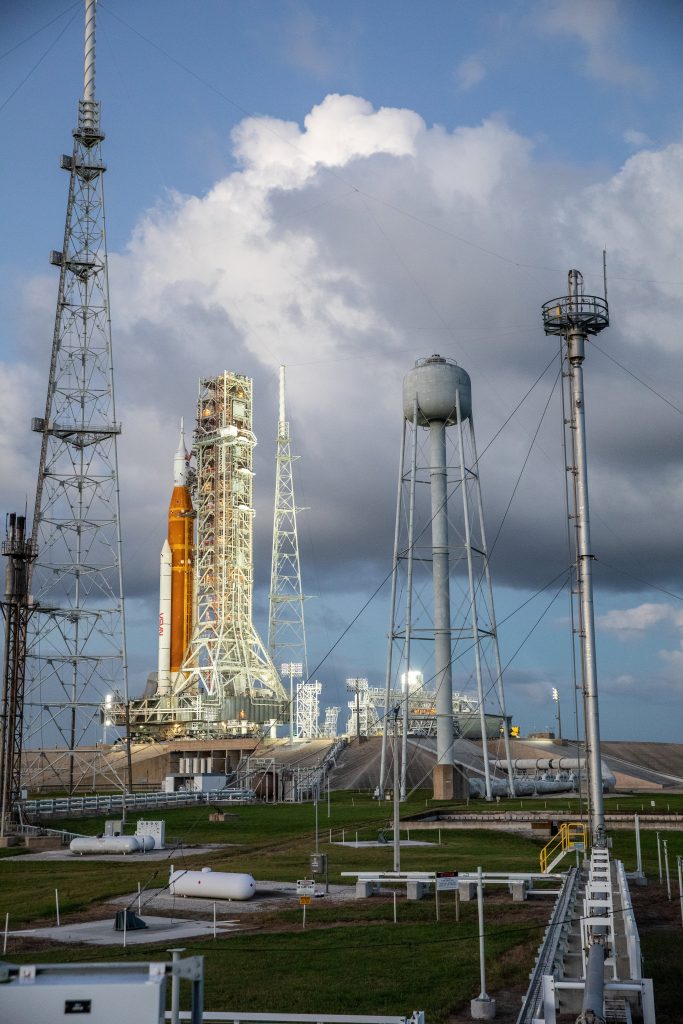NASA is monitoring tropical storm Nicole and decided to target launch for the Artemis I mission now on November 16. If employees are safe to return to work, as well as inspections give the clear after the storm has passed.
Based on expected weather conditions and options to roll back the SLS rocket ahead of the storm, NASA determined Sunday evening that the safest option was to keep the rocket and Orion spacecraft secured at the pad.
The SLS rocket is designed to withstand 136 km/h winds. Forecasts predict the greatest risks at the pad are high winds that are not expected to exceed the SLS design. The rocket is designed to withstand heavy rains at the launch pad and the spacecraft hatches have been secured to prevent water intrusion.
In preparation for the storm, teams have powered down the Orion spacecraft its European Service Module, the SLS core stage, the interim cryogenic propulsion stage, and boosters. Engineers have also installed a hard cover over the launch abort system window, retracted and secured the crew access arm on the mobile launcher and configured the settings for the environmental control system on the spacecraft and rocket elements. Teams also are securing nearby hardware and performing walkdowns for potential debris in the area.
Teams are poised to resume work as soon as weather at NASA’s Kennedy Space Center in Florida, USA, allows. Once back on-site, technicians will perform inspections at the launchpad to assess the status of the rocket and spacecraft.
A launch during a two-hour window that opens at 07:04 CET (06:04 GMT, 1:04 local time) on 16 November would result in a splashdown on 11 December. NASA has a backup launch opportunity on 19 November.


 Automated Transfer Vehicle page
Automated Transfer Vehicle page ATV blog archive
ATV blog archive
 NASA Orion page
NASA Orion page NASA Artemis
NASA Artemis Airbus Orion page
Airbus Orion page
Discussion: no comments